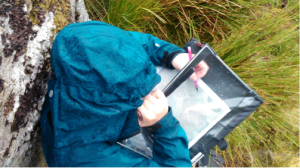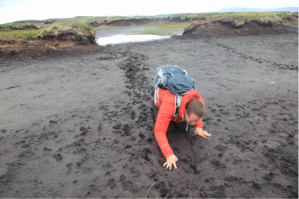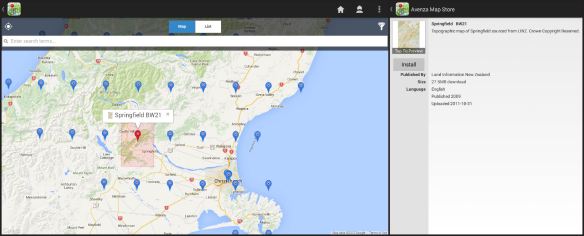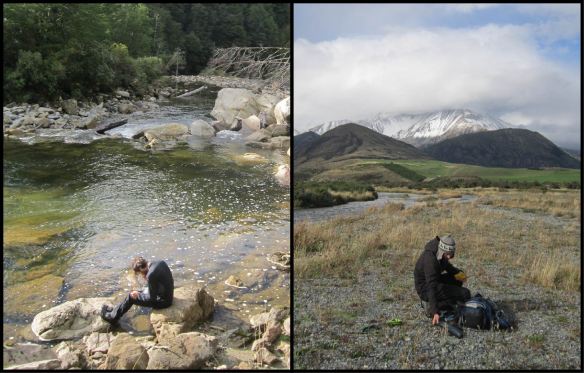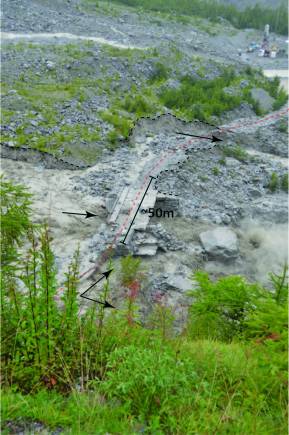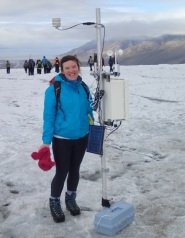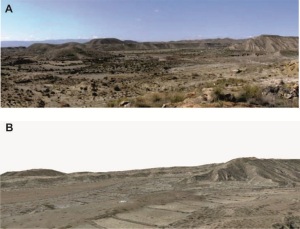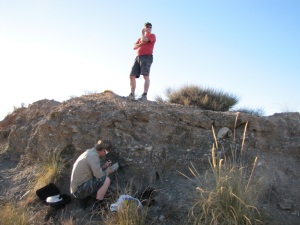Lawrence Eagle, University of Leeds
Last year my summer was filled with adventures: June was occupied by a hiking expedition across a remote part of Swedish Lapland, whilst late July and most of August were filled with my first visit to new PhD field sites in South East Alaska. Although I had never visited the region before my supervisors had and there is a wealth of academic and lay literature about the region, its geomorphology and ecology. So before I had even boarded a plane, let alone the ferry or small landing craft to be used throughout the field season, I believed I knew what was to come.

Figure 1. Three young brown bears fishing for pink salmon in a stream mouth. Bears posed a major logistical challenge as sites were often inaccessible as a result of their presence.
However, accessing sites through thick willow and alder scrub, where the only passable route is along the tracks forged by brown bears, is hard. Tracking the thalweg of a waist deep, boulder laden stream whilst recording on a cumbersome GPS unit… and watching for the aforementioned bears is harder. That’s before you mention the accidental dips into the freezing waters of the bay; the pieces of kit that are lost downstream after slipping on slimy boulders in the middle of a stream; failing to buy suitably water resistant electronic scales and dodging icebergs as we cruised up the bay towards its remaining glaciers. Nonetheless my first taste of the wilds of Alaska and of fieldwork in such a changeable environment were addictive.
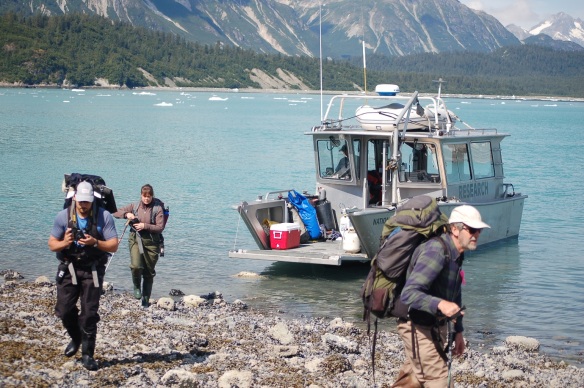
Figure 2. Field team disembarking the research vessel the Capelin. Credit Dr Lee Brown
My research catchments are located in Glacier Bay National Park, which was first established as a National Monument in 1925 under pressure from a number of eminent conservationist including John Muir and William Cooper. Now the national park is part of a UNESCO world heritage site and a United Nations biosphere reserve. The region has experienced rapid deglaciation since the 1700s, exposing a bay 150km long and 20km wide. Research here has focussed on glacial retreat, changing environmental conditions and the succession of ecosystems from bare ground through to coniferous forests. This succession of communities from bare ground to forests results in a diverse range of both terrestrial and aquatic ecosystems within the bay. As you move up the bay (and streams get younger) streams display a decrease in habitat complexity and a shift from slow flowing habitat types (such as pools and glide) to fast flowing habitat types (such as rapids and riffles).

Figure 3. Map of Glacier Bay with principal research catchments marked in white. Age of streams in brackets.
The summer of 2014 saw atypical, persistent, heavy rainfall across much of South East Alaska, driving sustained and repeated flood events in Glacier Bay throughout June, July and August. These floods form the primary focus of my PhD, which is interested in how stream ecosystems respond to extreme flooding and the role habitat availability and complexity play in conferring resistance to, and resilience following floods.
To understand how an ecosystem responds to a disturbance event it is important to understand how habitat availability and complexity, before and after the event, may drive ecological processes and community change. As such my project has two main aims: to quantify habitat change and availability associated with the floods and to quantify how the ecosystem responds over a number of years.

Figure 4. Waterfall and plunge pool holding over 1000 pink salmon at Wolf Point Creek.
There is a long history of stream research in Glacier Bay, focussed on ecological and geomorphological succession. As such I have access to a broad range of secondary datasets collected, in the main by my supervisors, over the last 40 years. My task was to identify the most relevant pieces in these datasets and then collect data to allow for comparisons of pre and post flood conditions. Understanding how habitat availability affects response in a diverse range of species with drastically different life history traits (think fast moving juvenile Coho salmon versus tiny midge larvae clinging to a rock) requires an equally diverse approach.
Consequently, my habitat mapping work has three main strands; mapping channel geomorphic units (CGUs) along 1km long reaches; repeating regularly collected cross sections at study sites and sampling sediments in an attempt to understand variation in microhabitat availability for aquatic invertebrates. These activities were pursued at all of my study sites in an attempt to elucidate the role of both meso and microhabitat in ecological response to disturbance.

Figure 5. Dr Megan Klaar resurveying longstanding cross sections. Credit Dr Lee Brown
Mapping CGUs is a slow process which occupied the majority of time at each field site. The process requires an individual to identify CGUs based on a hierarchical system, combining visual and physical characteristics of the river channel and flow at any given point, and then to walk the thalweg of the CGU with a mapping grade GPS. The process is then repeated for all CGUs along the study stretch to produce a CGU map of the river. This presents a number of challenges. Walking the thalweg through deep pools is often dangerous, and at times impossible due to their depth, whilst the thalweg of rapids can have such a high flow rate it is almost impossible to walk with or against it the flow. Secondly, consistently allocating CGUs to the correct category across sites with numerous physical differences and ensuring this is repeatable from one year to the next was challenging. Reaches were mapped from the tidal extent of the stream in an upstream direction until at least 1km had been mapped or to any structures (high falls) impassable to salmonid fish (a group of particular interest to the study).
Due to the time consumed mapping CGU’s there was less time than anticipated to focus on other fieldwork goals. The field team successfully rerecorded cross sections which will add to long standing datasets. Additionally some microhabitat data collection was possible, however only a limited number of sediment measurements were taken at each site, instead of a comprehensive analysis originally proposed. This will now become a major focus of future field campaigns.
In addition to this habitat data, aquatic invertebrate larvae, fish and algal samples and data were collected to allow us to map how ecosystems and communities of these organisms respond to the floods through time. These samples represent another core topic of my PhD.

Figure 6. Collecting aquatic invertebrate samples. Lawrence Eagle (Author, far right), Prof Sandy Milner (Centre) and Captain Todd Bruno (napping, far left, after safely guiding us up bay in his vessel the Capelin). Credit Dr Lee Brown
Now I am beginning the arduous task of processing geomorphological data and biotic samples (this requires me to identify thousands of individual bugs – before dissecting them and identifying their stomach contents!) in advance of a proposed second field season through the summer of 2017.

Figure 7. Channel geomorphic unit map of Wolf Point Creek.
The field season was supported by the BSG, water@Leeds and the Staffordshire Educational Endowment fund and I offer my thanks to each of these organisations for their continued support.







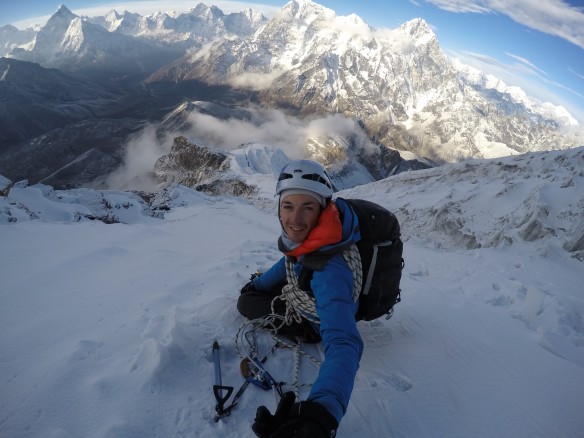

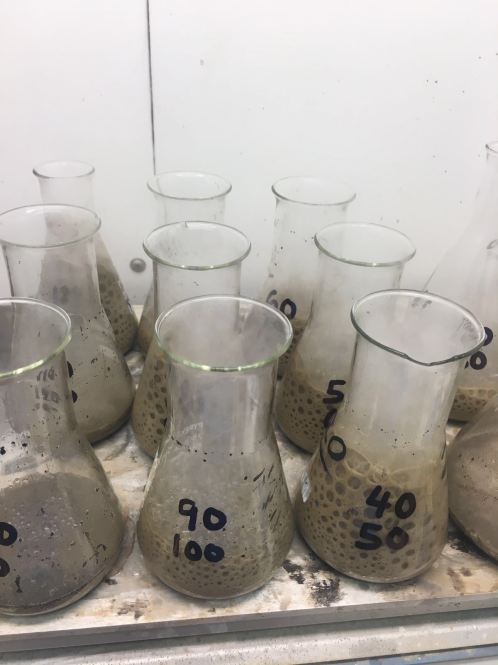




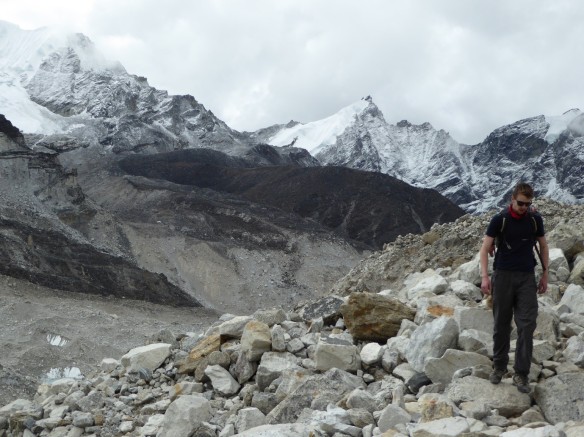


 Everest region background
Everest region background





